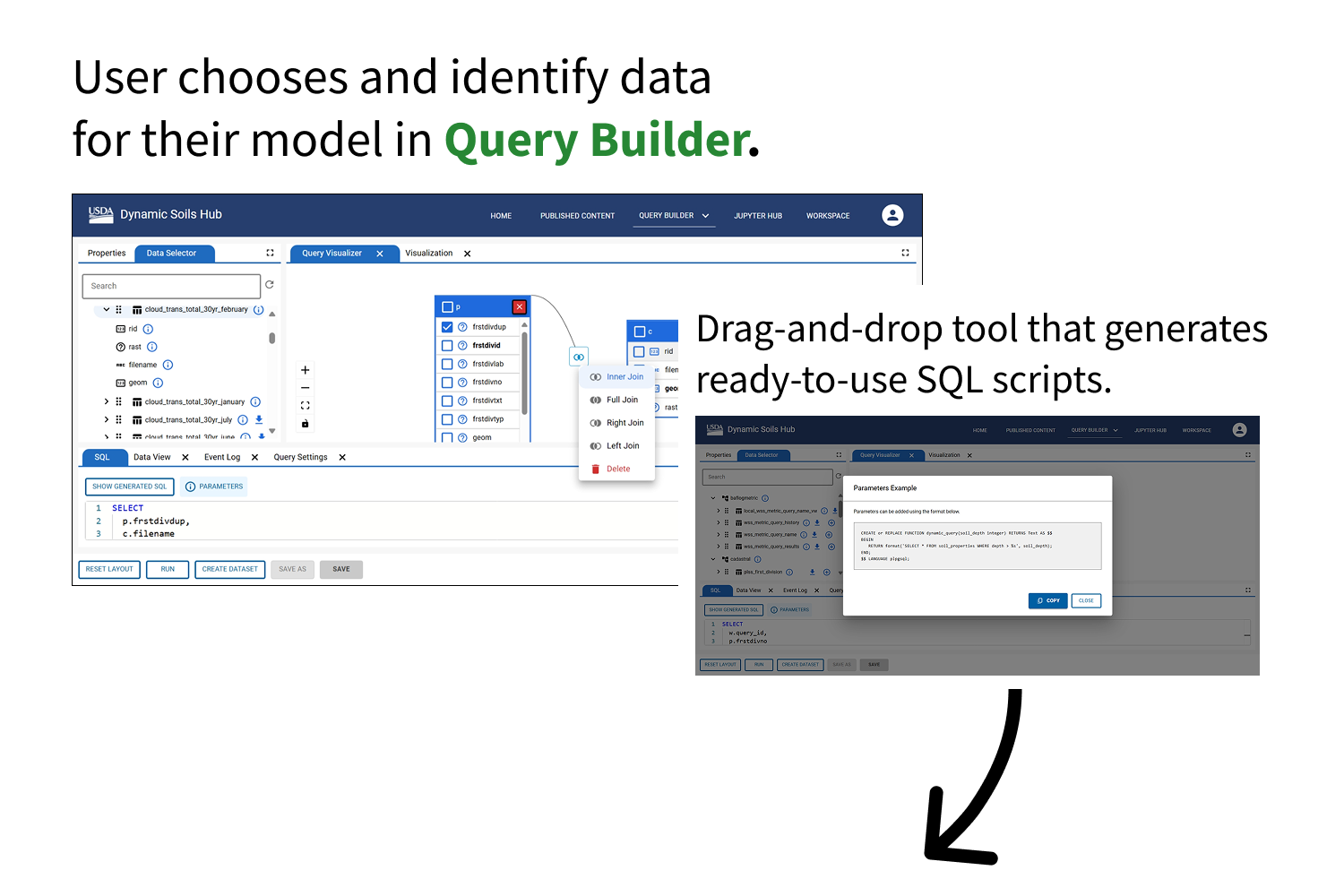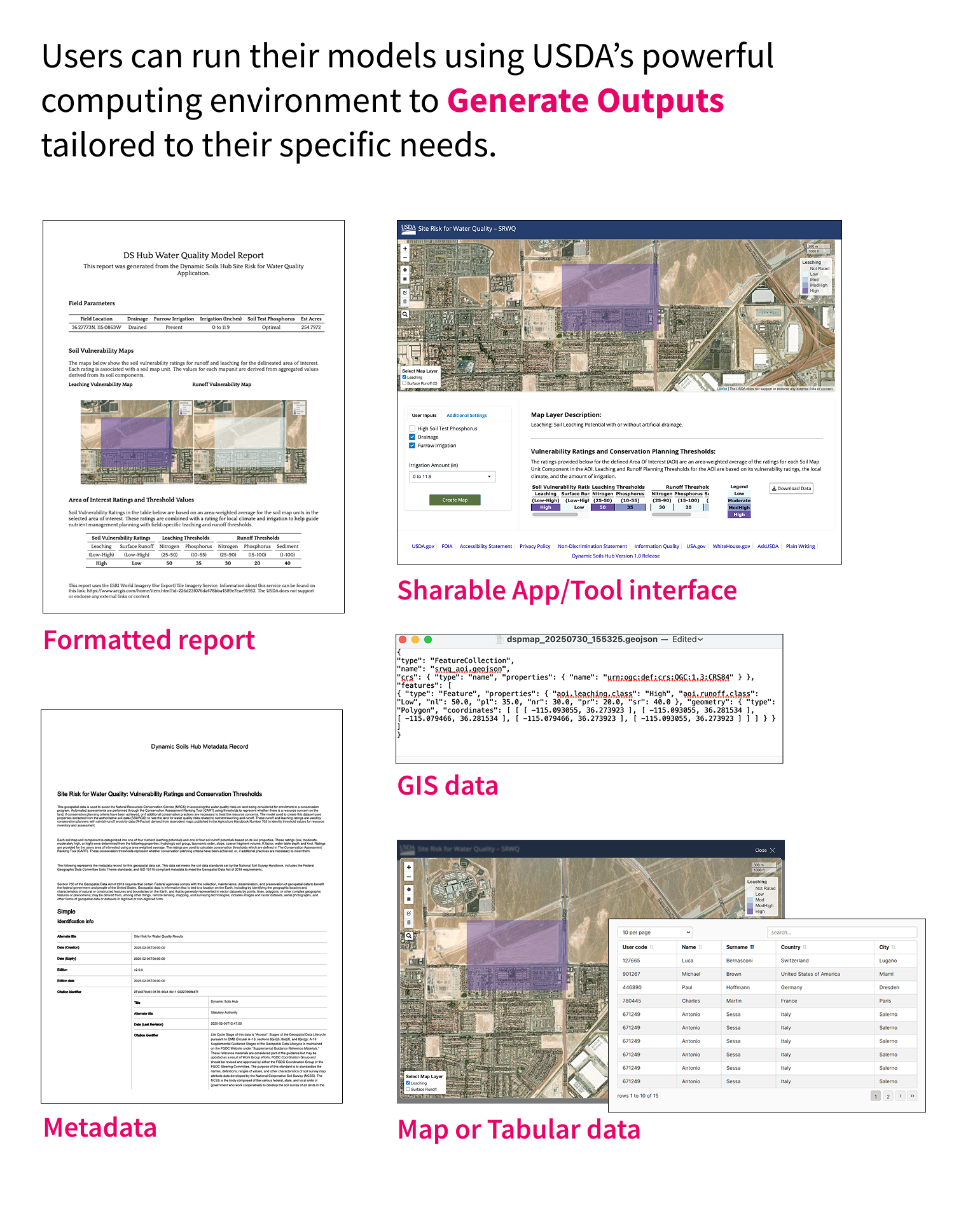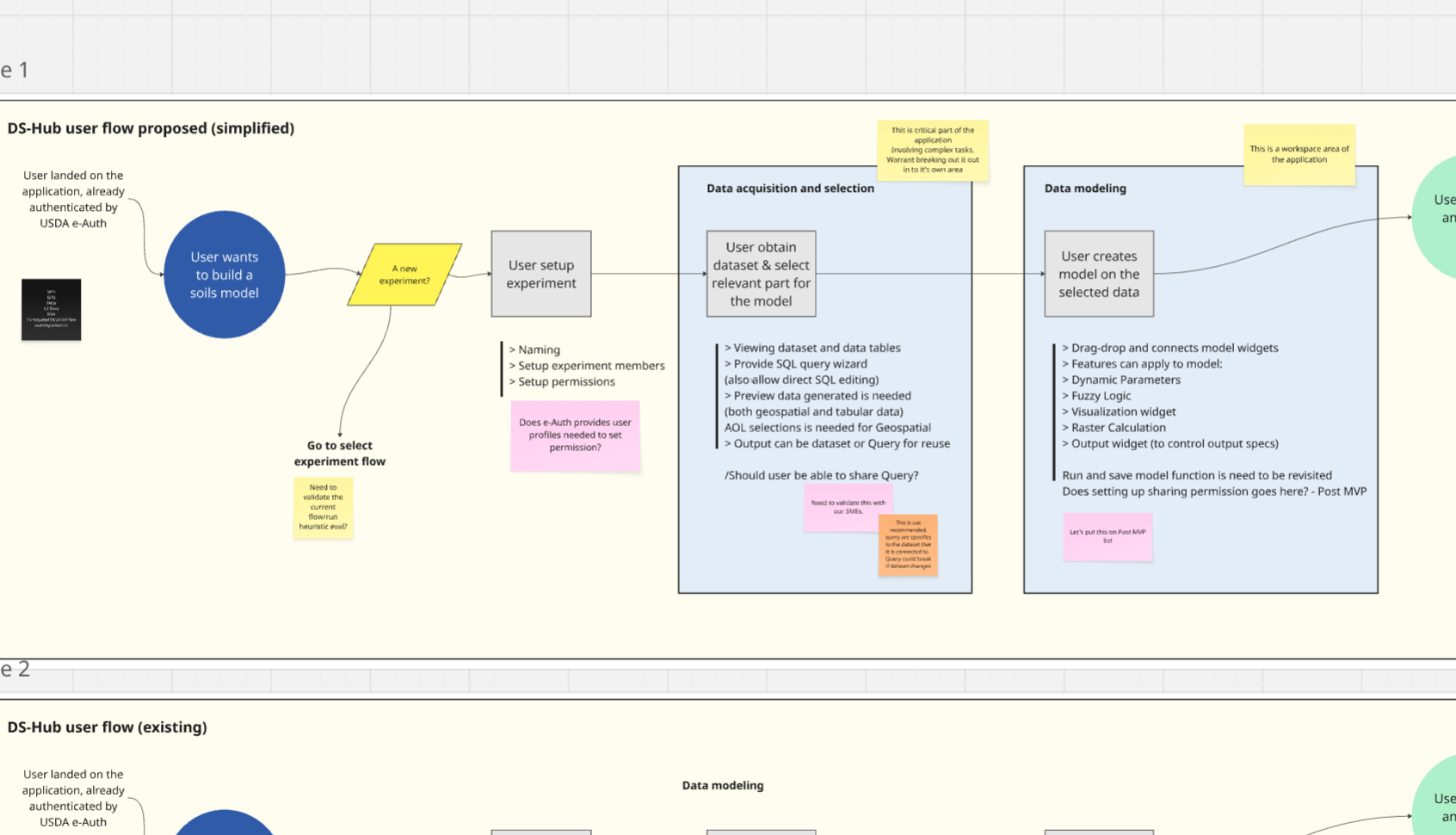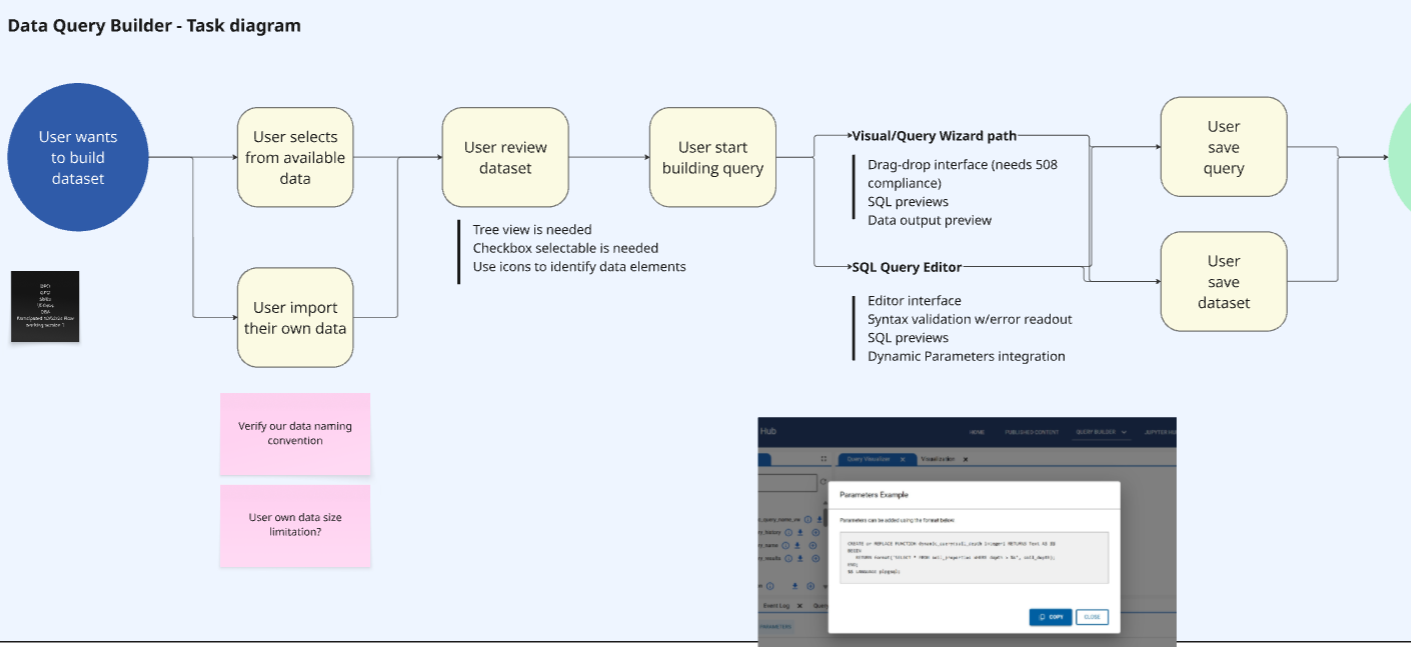Dynamic Soils Hub Application – Horizon Team USDA/NRCS
Lead Sr. Product Designer/CXO team
The USDA's Dynamic Soils Data App is a pioneering platform that seamlessly integrates multiple sources of soil information within a single environment for scientific modeling. Unlike traditional methods that involve multiple applications, it offers real-time, dynamic modeling with visualization capabilities, helping users—such as farmers, land managers, and government agencies—explore soil properties across various scales and locations. By combining data and scientific modeling, the platform enables users to create an unlimited array of meaningful maps with geospatial information, GDA metadata and interactive tools, limited only by their imagination, to support informed land-use decisions.

A project to create a platform that taps into USDA's 100+ years of soils data for the entire United States, empowering the creation of impactful scientific models to guide small to large-scale land use decisions.
UX Challenge:
While the team excelled at developing features, there was a need to shift focus toward a user-centric mindset. The challenge was to design an experience that emphasizes what users can accomplish with these features—helping them achieve their goals—rather than simply showcasing all the capibilities the application offers. This required a shift in expectations: from a typical designer delivering visual designs to becoming a UX strategic partner who collaborates with the team to create an overall experience that supports user tasks and goals.
UX Approach:
To inform the design process, I collaborated closely with a CX researcher and a CX content strategist from my team, both deployed part-time on this project. Since direct access to end-users was limited by USDA policies, we recruited subject matter experts to participate in user research activities such as interviews, feedback sessions, and co-design workshops. These experts provided valuable insights into workflows and challenges. Our CX-specific actions included:
Conducting heuristic evaluations of the existing platform to identify usability issues and opportunities.
Collaborating with subject matter experts and stakeholders to develop user flow maps and task analysis diagrams, facilitated through sessions that identify how the application's flow aligns with user workflows—ensuring related features are intuitively organized into the relevant workflow.
Initiating co-design workshops with stakeholders and subject matter experts (acting as user proxies) to understand objectives, gather collaborative input, and validate design ideas for this complex application.
Ensuring the platform’s design conformed to USDA standards and accessibility guidelines by aligning with the USDA design guide and utilizing USWDS design kits to meet Section 508 accessibility standards
This collaborative, multi-disciplinary approach enabled the development of a user-centered experience that improves usability and task effectiveness by intuitively breaking out workflows that users follow to achieve their results.
Examples of public facing website design (Adobe XD)
Please note that many of the CX-related documents for this project are restricted by the agency. This overview provides a high-level summary with some screenshots that are deemed public sharable. I would be happy to discuss my specific contributions and activities in more detail—please feel free to reach out to learn more.
Activities to Move Toward a User-Centered Mindset:
User Flow Map Exercise:
Helps visualize how users will interact with the application and the broad range of actions they want to accomplish (Jobs to be Done). This exercise assists in sectioning out the application based on user task flow—such as first finding and identifying data, then building experiments on that data, and finally testing and outputting results.
Task Analysis:
Maps out actions and features under each user flow segment, breaking complex task down into necessary steps that the user has to do to accomplish each task.
Co-Design Working Sessions:
Conducted with stakeholders and subject matter experts (acting as user proxies) to validate flow and experience.
These activities are intentionally not conducted in silos but with the team. This approach helped the team to shift the mindset toward user-centered thinking and trust in UX to grow. These activities continues into each of the iterations of the SAFe agile process.
Results:
The platform’s features and tools have been organized around the typical workflows, steps, and needs of users, simplifying the user flow and making the tool easier to use. The platform now includes a user-friendly interface and workflow that can enable broader audiences to run their own models using USDA's soils data.
A notable example is the Site Risk for Water Quality tool (App/Tool interface), which was assembled using the Dynamic Soils Hub application to build models that access USDA data, allowing users to assess water quality risks based on their own land area selection. You can explore it live here: Site Risk for Water Quality. This powerful platform helps broaden accessibility of important soils information to the public.
USDA 2024 OCIO Impact Award — Recognized as the IT Customer Experience Champion for the Horizon team. This award highlights our success in modernizing USDA technology solutions through the soil science application, which I contributed to as the Lead Product Designer (2023–present).
FPAC FY2023 Chief Operating Officer's Customer Service Award — Awarded to the Horizon team for developing the Nutrient Sensitive Areas Analysis tool, significantly improving conservation planning capabilities. I played a key role on this project as the Lead Product Designer (2023–present).





